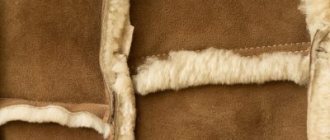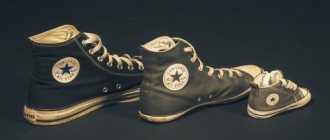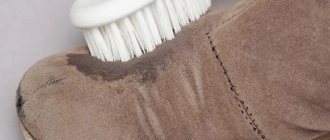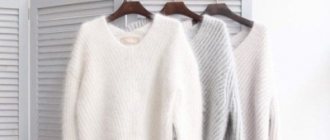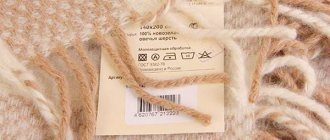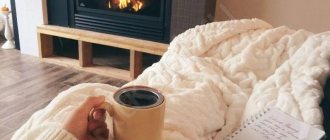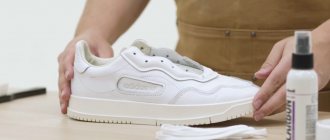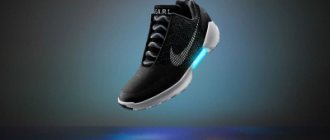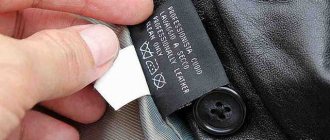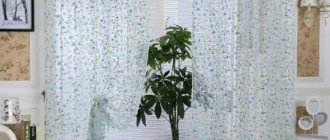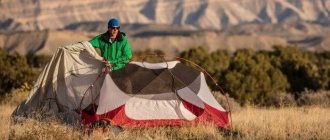Washing with washing powders is not suitable for everyone. For young children or people suffering from allergic diseases, it is necessary to look for alternative options.
Washing things with laundry soap can be a good replacement for chemical analogues. Read the article about whether and how to wash with laundry soap in an automatic washing machine and by hand.
Is it possible to wash it in a washing machine?
For washing in a washing machine, special detergents have been developed that foam little . In addition, they may contain special additives that soften water.
The soap contains organic fatty acids of animal and plant origin. Depending on their quantity, soap has different concentrations of fat content (from 40 to 80%).
The higher the concentration of fatty acids, the less it foams . Therefore, this product can be machine washed.
But with frequent use of bars, a greasy coating may form on the walls and internal parts of the machine.
In order for the machine to work without breakdowns, you need to regularly clean it of scale and greasy film. To do this, start the idle mode at a temperature of 90C with citric acid. When using laundry soap in an automatic machine, it is important to observe the dosage of the detergent and carry out preventive maintenance at least once a month .
Maintenance of the machine after washing with soap
If you plan to occasionally replace regular powder with laundry soap, then you don’t need to worry about a possible breakdown of the machine. In one-time cycles there will be no thick adhesive layer, so you can safely wash baby clothes, diapers and towels with a brown bar. To completely protect the machine, it is enough to run another program after finishing washing, adding a little vinegar and baking soda to the dispenser.
Those who want to completely replace household chemicals with laundry soap will have to take the prevention of possible contamination more seriously. Now you will need careful care and regular cleaning. The nature and extent of cleaning procedures depends on the quality of tap water.
Hard tap water accelerates the formation of plaque and increases the “sticking” of fat to the parts of the washer.
With soft water, no special intervention is required. You just need to rinse the machine as often as possible: run a “idle” cycle after each wash, plus an additional cycle when you finish using the washer. It is also recommended to constantly wipe the drum, cuff and detergent tray. It is important to carefully examine the “insides” of the machine for the presence of suspicious deposits and scale. Regular cleaning will not hurt either: once every 3-4 months, turn on the “empty” program, adding vinegar, citric acid, soda or a chemical cleaner to the dispensary.
If the water is too hard, then the risk of contamination of the machine due to the sticky soap composition increases. The fact is that the impurities and substances present in such a liquid accelerate the formation of plaque and increase the “sticking” of fat to the parts. The frequency of preventive cleaning is increasing - it is better to clean the washing machine every 2-3 weeks.
In any case, it is not difficult to keep the machine safe and sound. Many years of experience of housewives shows that switching to environmentally friendly soap without unpleasant consequences is possible. The main thing is to control the process, be responsible and follow the dosage.
Pros and cons of using
Soap contains fatty acids, which are obtained from animal fats and vegetable oils, and soda.
Thanks to this composition, it has the following qualities:
- Does not cause allergic reactions. Suitable for the delicate skin of newborns and allergy sufferers.
- Perfectly removes even the most difficult stains. If there is a dirty stain, you can just soap it, let it sit for 15-20 minutes and wash it. The stain will be removed.
- Does not destroy tissue. After washing, the fabric remains soft.
- Saving money. The cost of one soap bar is several times less than the cost of a standard pack of washing powder for an automatic machine.
The disadvantages include:
Silk and wool items cannot be washed.- It dissolves poorly in cold water and can form flakes that will settle on the walls of equipment.
- Requires some time to prepare. The bar needs to be grated or a gel prepared. When using liquid soap, you don’t have to waste time on preparation.
- Some housewives note a not very pleasant smell. But if you add a few drops of essential oil to the gel, the smell will become pleasant.
Washing powder made from soap for washing children's clothes
Washing powder for children's clothes should consist of safe substances.
- Safe powders do not contain phosphates, which damage the skin's protective barrier.
- Chlorine is a dangerous substance that causes irritation to the skin and respiratory tract.
- Optical brighteners penetrate deeply into fabric fibers and accumulate in them. Constant contact of these substances with a child's skin can lead to unpleasant health consequences in the future.
- Surfactants from washing powder accumulate in body cells and disrupt normal metabolism.
- Dyes and flavors are a broad class of substances that differ significantly in composition and effects on the body. Among them there may be quite safe ones, but it is better if they are not present at all in detergents for washing children's clothes and things.
A high-quality washing powder for washing dirty children's clothes and linen should consist of soap with the addition of soda and citric acid so that it can be used for machine washing.
Chistown Children's is a completely natural and hypoallergenic baby powder that meets all safety requirements.
Features of manual and machine processing
There are some features and differences for hand and machine washing using soap.
In the washing machine
Detergents with low foam formation have been specially developed for washing machines. Laundry soap meets these requirements. To use it in an automatic machine, the bar is crushed.
Features: fabrics of different composition produce different amounts of foam. Natural silk and wool fabrics foam the water more, so less detergent is used to wash them.
To wash a kilogram of dry laundry, add 2 tablespoons of shavings.
Manually
Hand washing will require more physical effort. It has some features:
Before starting the process, you need to sort things by color and wash colored items separately from white ones.- Heavily soiled laundry should be pre-soaked in soapy water for 30-60 minutes.
- If there are dirty spots, you must first wet them, rub them with soap and leave for 20-30 minutes. After this, rub with a brush or with your hands on a grater.
- You need to rinse the laundry several times until the foam is completely washed away.
It will be difficult to wash heavily soiled items by hand, because... Dirt washes off well in hot water. Your hands won't be able to withstand that temperature.
Should I wash new clothes for my baby?
Newborn babies are very vulnerable to external factors, microorganisms and bacteria. Your task is to protect the baby as much as possible from such influences.
Pay utmost attention to new things that, although not visibly dirty, may still contain particles of dust and bacteria. You cannot be sure that diapers, rompers and baby vests were stored in proper conditions and were not soiled during sale. In addition, to make them look presentable, some manufacturers sprinkle their products with starch, which can cause skin irritation.
What fabrics can be washed?
The soap is suitable for washing items made from natural and synthetic fabrics such as cotton, linen, polyester,
You can wash woolen items with laundry soap, but only if you do it with your hands. When washing in a machine, wool quickly accumulates soap suds and pills . It is quite difficult to rinse foam out of wool.
When hand washing woolen items, first make a soap solution and only then immerse the item in it. Lathering wool is not recommended.
Natural silk fabrics also foam the soap solution well. Therefore, when machine washing, the dosage of soap is reduced.
What soap to take for the machine
In order for washing with laundry soap to be of high quality, you need to pay close attention to the composition of the product even when purchasing it. It is the substances contained in the product that determine how well it washes clothes.
- Usually dark bars of soap indicate how much detergent they contain. Often this figure is 72%.
- Liquid laundry soap can contain various softening additives - glycerin, natural oils, extracts of medicinal herbs, as well as enzymes and bleaches that improve the quality of washing.
- You can also find products with a low content of fatty acids, which are about 40%. Many housewives prefer this detergent. So as not to waste time preparing pasta.
- To wash children's clothes, many mothers prefer to use natural tar soap. Some manufacturers add mink oil and herbal extracts to such products.
- Laundry soap made with the addition of palm or coconut oil foams less, smells pleasant and leaves virtually no residue on the parts of the washing machine.
If the composition contains enzymes, then it is strictly forbidden to use it for washing laundry made from delicate fibers.
It is necessary to wash things in a mode that is optimal for a specific type of fabric. It should be remembered that at high temperatures, soap particles dissolve much faster, and when washing in an accelerated mode, additional rinsing is necessary.
Which is better to choose: liquid, solid, powder?
The action of soap is based on the fact that the fatty acids contained in its composition react with dirt and wash it out of the fabric fibers with the help of foam. Therefore, the more fatty acids in the bar, the more effective its action .
Depending on the percentage of fatty acids, the industry produces several types of solid soap:
- Category 1 , contains 70.5 – 72% fatty acids;
- category 2 , consisting of 65-69% FA;
- Category 3 , contains up to 64% of components.
Depending on the degree of concentration of fatty acids, the color of the bar changes. The more there are, the darker the piece.
Nowadays you can find laundry soap of different consistencies on sale:
- bar,
- liquid,
- powdery.
Soap powder is a crushed bar version . Soap is no different from bar soap, only crushed into crumbs. It is convenient to pour it into the drum or powder tray in the washing machine.
As for liquid soap, the situation is different. It is, of course, convenient to use for machine washing. As for the composition of this product, it has nothing in common with traditional soap.
If you read its composition indicated on the label, you can find surfactants, fragrances and other chemical components in it. Liquid soap has nothing in common with laundry soap.
The technology for the production of laundry soap and the substances included in its composition do not allow it to be produced in liquid form.
Positive qualities of soap
Laundry soap in bars is hypoallergenic , it is dominated by fatty acids obtained from natural products, and also contains vegetable oils. Ideal for washing children's clothes and indispensable for people prone to allergic dermatitis.
Special powders have been created for washing machines that do not foam much. Laundry soap has the same property, which is why it is suitable for automatic machines when used in the right dosage.
Note: the intensity of foam formation depends on the type of fabric. When washing woolen items, it is larger, so you need to put in less product.
The pungent smell of bars, to which people of the older generation were accustomed, has disappeared. A faint aroma is felt only during washing; after the laundry is completely dry, it disappears.
“Liquid” laundry soap appeared on store shelves. The production process could not do without the use of synthetic surfactants, abbreviated as surfactants. The product is somewhat different from real hypoallergenic laundry soap in bars, which does not contain them in its composition.
How to wash clothes automatically?
The soap bar does not dissolve well, so it must first be prepared for use in the car.
If the bar is in the form of jelly
Grate 100 grams of soap bar on a fine grater. Pour 1 liter of hot water over the shavings. Heat over low heat until completely dissolved.- Dissolve 3 tablespoons of soda ash in 3 liters of water.
- Mix both solutions together.
- To add a pleasant smell to the mixture after cooling, add 10-15 drops of any essential oil.
- Pour the solution into a convenient container. Wait until it cools completely (the solution should acquire a jelly-like consistency), after which it can be used.
For one cycle, 200 grams of jelly are added to the drum.
Shavings
Another easier way to use bar soap is in the form of shavings. It requires less time.
For this method, the piece is grated on a fine grater. It is then poured into a drum or powder container. The shavings are taken at the rate of 2 tbsp. l. for 1 kg of laundry.
To improve the quality of washing, you can add soda to the shavings (3 tablespoons per piece) . The mixture should be stored in a container with a tightly closed lid so that the soda does not absorb moisture.
The video will show you how to wash with laundry soap in a washing machine:
Solution
For better dissolution, before use, dissolve the shavings in hot water (a glass of water per 2 tablespoons of shavings). The solution is poured into the powder tray.
How to get rid of stains
Basically, stains on a baby’s clothes appear due to the peculiarities of their life. In the first months, you will encounter stains from urine and feces, saliva and regurgitation; after introducing complementary foods, you will become familiar with stains from fruits, vegetables or fattier foods.
Control methods are very diverse and depend on their nature and origin of the stains. At the same time, follow the main rule - no matter what the stain is and no matter how quickly you clean it, the clothes must be washed additionally as usual.
Removing stains from juice, puree, fruits, berries
Immediately after a fruit or berry stain has formed, rub the area with laundry soap and rinse with warm water.
For old stains you can use:
- Turpentine or refined gasoline. Dampen a cotton swab and wipe the stained area from the edges to the center. Then be sure to soak your laundry in warm water and detergent for a few hours to get rid of the smell.
- Lemon acid. Dilute 1 tbsp. spoon of lemon juice in 1 liter of warm water and rub the stain with the resulting solution.
- Medical alcohol. Heat 1 teaspoon of alcohol and add a few grams of citric acid. Apply the substance to the stain and wait a little, and then immediately wash the item as usual.
- Salt, soda and vinegar. Mix the products in equal quantities with water to make a paste and rub the affected area. Leave the mixture on the product until completely dry. Then wipe off with a solution of water and vinegar (in equal quantities). The product works well on banana stains.
In addition to traditional methods, use stain removers and bleaches designed specifically for children's clothes to remove stains.
Removing grease and protein stains from food
Please note that over time, grease stains will become more difficult to remove, as grease-containing substances form a dense film on the fabric that is difficult to remove. To avoid this, try to wash your baby's underwear immediately after it gets dirty.
Secrets to removing greasy stains:
- Rub the stain with laundry soap and place the product in a plastic bag for several hours. This way the soap will not dry out and retain its properties.
- Moisten the stain with water, rub with laundry soap and sprinkle with sugar. After this, rub the problem area with a brush and wash the item immediately.
- Rub a small amount of salt into the stained area immediately after the stain has been applied.
- Sprinkle salt, baby powder, or baking soda on the stained area. Then iron the product through a paper towel and press it with a press for 1.5-2 hours.
Dishwashing detergent is excellent for removing greasy stains. However, after using the substance, be sure to rinse your laundry well.
Try removing very old greasy stains by mixing ammonia with glycerin or hydrogen peroxide.
How to remove milk, spit up and drool stains
Stains from regurgitation, drool or mother's milk, if not removed in time, turn into yellow streaks that are difficult to remove.
To clean clothes from such stains, buy regular aspirin at the pharmacy. Mix two tablets of the drug with 1 teaspoon of warm water and apply to the problem area. Leave the product on for several hours and wash the product as usual.
If the traditional method does not help, try removing the stain using a children's stain remover.
How to remove old feces and urine stains on baby clothes
Try not to leave washing items stained with baby feces until later.
- Immediately remove any remaining feces from the material and rinse the item in cold water.
- Soak the product in warm water for 2-3 hours, after rubbing the problem area with laundry soap.
- Wash your laundry in the classic way.
Hydrogen peroxide will also help get rid of traces of vital activity on a child’s clothes. Apply the preparation to the stain and leave for 1.5-2 hours. Then wash as usual.
An alternative to peroxide is table vinegar. First, moisten the stain with essence, and then sprinkle with laundry soap shavings. Leave the product with the product applied overnight and then wash.
Hand processing
Children's or delicate items are washed by hand. To do this, the soap is grated, dissolved in a bowl of warm water and washed. If the laundry is too dirty, then soak it in a soapy solution for 1-2 hours.
To wash stained items, proceed as follows:
moisten things with warm water;- lightly squeeze;
- I soap the dirty spot;
- soaped items are left to lie for 20-30 minutes without water;
- pour warm water, wash the stain with a soft brush.
After finishing washing, the laundry should be rinsed well 3-5 times.
Prevention of breakdowns of household appliances
When using soap, a greasy film remains on the parts of the automatic machine. If you use it for a long time, it can lead to equipment breakdowns.
To reduce the likelihood of breakage, you need to include an additional rinse after each cycle.
In addition, 1-2 times a month you need to run a dry wash at maximum temperature using citric acid or soda ash . This will help dissolve fat deposits.
If laundry soap is not used constantly, but for children's clothes, then subsequent washing with ordinary powders will help wash off the plaque.
Ironing
After washing, it is important to dry your clothes. This is best done either on a glassed-in balcony or in the bathroom. If the balcony is not closed, then street dirt may get on things. Hanging wet items at home is also contraindicated. This increases humidity and increases the risk of mold.
Clean clothes and diapers must be ironed. It is no secret that ironing not only gives the product an attractive appearance, but also disinfects it. This is important, because a newborn should not encounter germs at all in the first month of his life. This is explained by the fact that untreated clothing can cause infection through a navel that has not yet healed.
Important! To make your baby's clothes fuller and softer, just iron them on both sides in the steam mode.
When the child grows up, you can iron it on one side. Unfortunately, little attention is paid to this point by parents, and some consider ironing to be an unnecessary activity, because you can simply fold things neatly, thereby preventing them from creasing.
Reviews from people
There is no clear opinion about the quality of using laundry soap. Most consumers agree that it does not cause allergies . And this product is excellent for choosing when washing clothes for newborns and allergy sufferers.
The only downside is the not very pleasant smell of the items after washing. But to eliminate it, it is recommended to use essential oil or rinse things with the addition of apple cider vinegar or citric acid.
You can read reviews about using laundry soap here and here.
You will find maximum useful information about washing clothes and various fabric products here.
Useful properties of detergent
Laundry soap will be a good alternative to even expensive washing powder. It is considered an environmentally friendly detergent, since it contains no harmful components. Dark soap bars are produced from fatty acids, with a small addition of vegetable oil and various fats of animal origin. Many manufacturers add soda, thanks to which it acquires antibacterial properties.
Pediatricians advise young mothers to use laundry soap for washing children's clothes. This product rinses well and is hypoallergenic. You can use laundry soap to care for children's things on the same basis as baby soap.
The linen of small children and allergy sufferers can also be washed with tar soap, which is made on the basis of birch tar. Such products are often used for cosmetic and medicinal purposes, but they are also suitable for washing clothes. The birch tar included in the composition has a detrimental effect on many microorganisms and fungi, thereby disinfecting things.
It is especially good to wash socks, tights and rag shoes with tar soap. This can serve as a preventive measure for the fungus or prevent its further spread if the person is already sick.
You can wash children's clothes in a washing machine with tar soap; after drying, the laundry does not have a chemical smell and does not cause allergies in the child.
Laundry soap is used as first aid for animal bites. It cleans the wound well and disinfects the saliva that gets into it during a bite.
